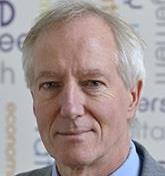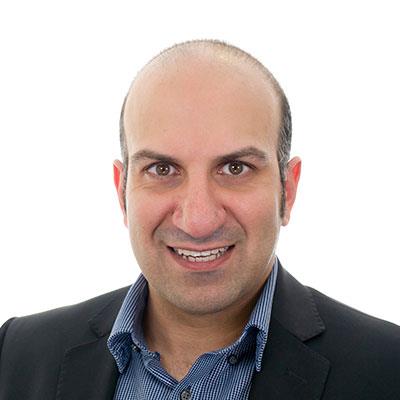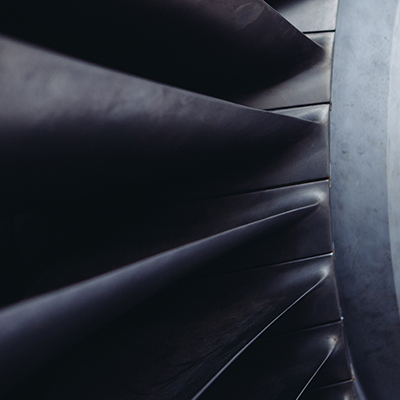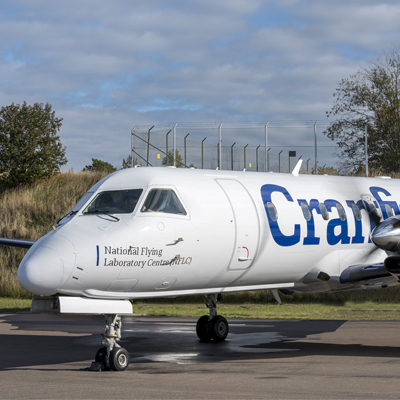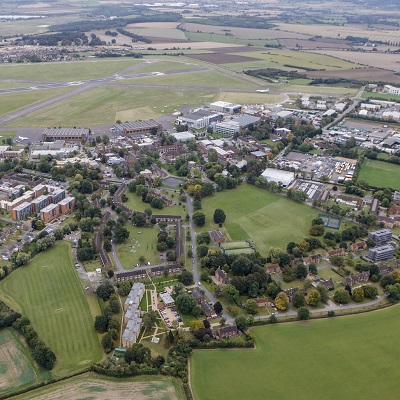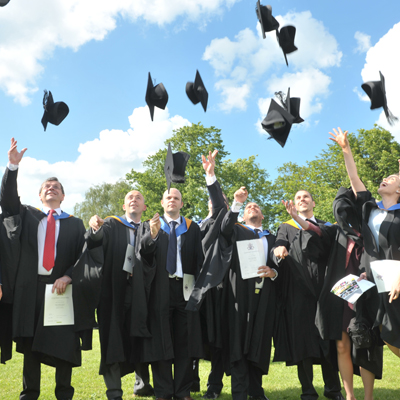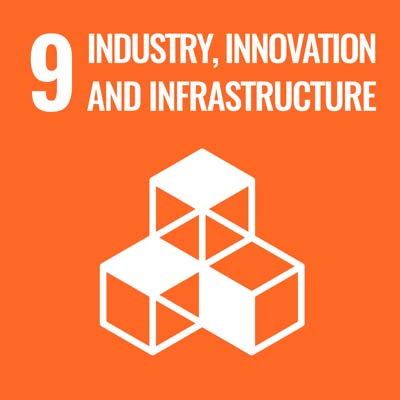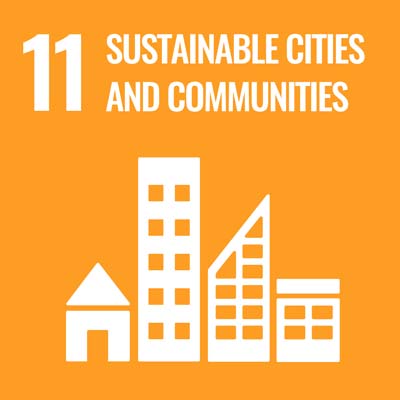Overview
- Start dateMarch or October
- DurationMSc: one year; PgDip: up to one year
- DeliveryTaught modules 50%, individual research project 50%
- QualificationMSc, PgDip
- Study typeFull-time
- CampusCranfield campus
Who is it for?
This course has been designed for those seeking a career in the design, development, operation and maintenance of propulsion systems.
Suitable for graduates seeking a challenging and rewarding career in an established international industry. Graduates are provided with the skills that allow them to deliver immediate benefits in a very demanding and rewarding workplace and therefore are in great demand.
Why this course?
This option is structured to enable you to pursue your own specific interests and career aspirations. You may choose from a range of optional modules and select an appropriate research project. An intensive two-week industrial management course is offered which assists in achieving exemptions from some engineering council requirements. You will gain a comprehensive background in the design and operation of different types of propulsion systems for aerospace applications, whilst looking at the methods of propulsion with the main focus on air-breathing engines and the use of gas turbines for propulsion.
We have been at the forefront of postgraduate education in aerospace propulsion at Cranfield since 1946. We have a global reputation for our advanced postgraduate education, extensive research and applied continuing professional development. Our graduates secure relevant employment within six months of graduation, and you can be sure that your qualification will be valued and respected by employers around the world.
Informed by industry
Our industry partners help support our students in a number of ways - through guest lectures, awarding student prizes, recruiting course graduates and ensuring course content remains relevant to leading employers.
The Industrial Advisory Panel meets annually to maintain course relevancy and ensure that graduates are equipped with the skills and knowledge required by leading employers. Knowledge gained from our extensive research and consultancy activity is also constantly fed back into the MSc programme. The Thermal Power and Propulsion MSc Industrial Advisory Panel is comprises senior engineers from companies such as:
- EasyJet,
- EASA,
- RMC,
- Rolls-Royce,
- Senior Consultant,
- Uniper Technologies.
Course details
The taught programme for the Aerospace Propulsion master's consists of eight compulsory modules and up to six optional modules. The modules are generally delivered from October to April.
Course delivery
Taught modules 50%, individual research project 50%
Individual project
You are required to submit a written thesis describing an individual research project carried out during the course. Many individual research projects have been carried out with industrial sponsorship, and have often resulted in publication in international journals and symposium papers. This thesis is examined orally in September in the presence of an external examiner.
Previous individual research projects have included:
- Design of an experimental test rig facility for an axial compressor;
- Energy management in a hybrid turbo-electric, hydrogen fuelled, hale UAV;
- Civil aircraft intake, nacelle and nozzle aerodynamics;
- The computation of adiabatic isobaric combustion temperature;
- Air filtration systems for helicopters;
- Nacelle parametric design space exploration;
- Distributed propellers assessment for turboelectric distributed propulsion;
- Aerodynamic analysis of the flowfield distortion within a serpentine intake;
- Green runway: impact of water ingestion on medium and small jet engine performance and emissions;
- Distributed propulsion systems boundary layer ingestion for UAV aircraft;
- Preliminary design of a low emissions combustor for a helicopter engine;
- Compressor design and performance simulation through the use of a through-flow method;
- Estimation of weight and mechanical losses of a PTS for a geared turbofan engine;
- Optimisation of turbine disc for a small turbofan engine;
- Modelling of tip leakage flows in axial flow high pressure gas turbine;
- Aerodynamic modelling and adjoint-based shape optimisation of separate-jet exhaust systems;
- Preliminary design and performance analysis of a combustor for UAV.
Modules
Keeping our courses up-to-date and current requires constant innovation and change. The modules we offer reflect the needs of business and industry and the research interests of our staff and, as a result, may change or be withdrawn due to research developments, legislation changes or for a variety of other reasons. Changes may also be designed to improve the student learning experience or to respond to feedback from students, external examiners, accreditation bodies and industrial advisory panels.
To give you a taster, we have listed the compulsory and elective (where applicable) modules which are currently affiliated with this course. All modules are indicative only, and may be subject to change for your year of entry.
Course modules
Compulsory modules
All the modules in the following list need to be taken as part of this course.
Gas Turbine Performance, Simulation and Diagnostics
| Aim |
To inform you of the different types of gas turbine engines; their applications, on-design, off-design and transient performance. To provide you with the ability to undertake gas turbine component performance calculations, diagnostics and to perform evaluations of gas turbine performance, and deterioration. |
|---|---|
| Syllabus |
Gas Turbine Types and Applications Effect of design parameters such as pressure ratio and turbine temperature on the basic gas turbine cycle. Modifications of the basic Brayton cycle, compounding, intercooling, reheating, heat exchange, bypass, and fan cycles. Simulation of the above. Performance and Simulation Design point performance of turbojet, turbofan and turboshaft cycles, effect of bypass ratio. Off design performance, effect of ambient temperature, altitude, throttle setting and flight speed. Non-dimensional representation. Gas turbine simulation. Effects of bleeds and power offtakes. Compressor turbine matching. Gas turbine degradation. Simulation and diagnostics of the above. Component maps. Surge alleviation, performance improvements, steady-state, and transient performance. Off-design performance calculations and iteration techniques Accelerations, decelerations, effects on surge margin. Transients of single shaft and multi-shaft engines. Transient performance simulation. Effects of heat transfer on transient performance. Software used for gas turbine performance simulation: TURBOMATCH Diagnostics and Monitoring. Description of gas turbine performance degradation and faults. Description of most used gas turbine condition monitoring techniques. Software used for diagnostics: PYTHIA |
| Intended learning outcomes |
On successful completion of this module you should be able to:
|
Mechanical Design of Turbomachinery
| Aim |
To familiarise you with the common problems associated with the mechanical design and the lifting of the major rotating components of the gas turbine engine. |
|---|---|
| Syllabus |
Failure criteria: Monotonic failure criteria: proof, ultimate strength of materials. Theories of failure applied to bi-axial loads. Other failure mechanisms associated with gas turbine engines including creep and fatigue. Fatigue properties including SN and RM diagrams, the effect of stress concentration, mean stress etc. Cumulative fatigue, the double Goodman diagram technique to calculate the fatigue safety factor of gas turbine components. Methods of calculating the creep life of a component using the Larson-Miller Time-Temperature parameter. Applications: The design of discs and blades. Illustration of the magnitude of stresses in conventional axial flow blades by means of a simple desk-top method to include the effects of leaning the blade. The stressing of axial flow discs by means of a discretised hand calculation which illustrates the distribution and relative magnitude of the working stresses within a disc. The design of flanges and bolted structures. Leakage through a flanged joint and failure from fatigue. Blade vibration: Resonances. Desk top techniques for calculating the low order natural frequencies of turbomachine blades. Allowances for the effects of blade twist and centrifugal stiffening. Sources of blade excitation including stationary flow disturbance, rotating stall and flutter. Derivation of the Campbell diagram from which troublesome resonances may be identified. Allowances for temperature, pre-twist and centrifugal stiffening. Methods for dealing with resonances. Damage Mechanisms and Lifing: Fundamentals of Creep and Fatigue damage mechanisms. Material, design and operational parameters that affect creep and fatigue. Experimental and test procedures to characterise creep and fatigue damage. Classification of Fatigue-Low Cycle and High Cycle and use of appropriate methods: Strain Vs Stress Methods. Cumulative damage assessment using cycling counting and linear damage rules -Milner Approach. |
| Intended learning outcomes |
On successful completion of this module you should be able to:
|
Turbomachinery and Blade Cooling
| Aim |
To familiarise you with compressor and turbine aerodynamic design and performance by instruction, investigation and example. To introduce you to the technology of gas turbine blade cooling through analytical and practical approaches of heat transfer principles, convection cooling, impingement film transpiration cooling and liquid cooling. |
|---|---|
| Syllabus |
Thermofluids: Introduction to aerodynamics, thermofluids, and compressible flows. Compressor Design and Performance Overall performance: Fundamentals of axial flow compressors. Overall performance, achievable pressure ratio and efficiency. The effect of Reynolds number, Mach number, and incidence. Definition of isentropic and polytropic efficiency, effect of pressure ratio, performance at constant speed, surge and surge margin definitions, running line, choking effects. The axial compressor stage: Stage loading and flow parameters, limitation in design on pitch line basis. Definition and choice of reaction at design, effect on stage efficiency. Loss sources in turbomachines and loss estimation methods. The ideal and real stage characteristic, stall and choke. The free vortex solution, limitations due to hub/tip ratio. Off-design performance Choice of overall annulus geometry, axial spacing, aspect ratio, limitations of rear hub/tip ratio. Compressor blading: selection of blade numbers, aspect ratio and basic blade profiling. Compressor design example: Multi-stage compressor design example carried out for a HPC. Turbine Design and Performance Overall performance: the expansion process and characteristics, annulus layout and design choices, choice of stage loading and flow coefficient, engine overall performance requirements, overall annulus geometry and layout; rising line, constant mean diameter and falling line. The axial turbine stage: Aerodynamic concepts and parameters, velocity triangles, reaction, stage loading, flow coefficients. The ideal and real characteristic. Design for maximum power: effect of choking and change of inlet temperature and pressure. Stage efficiency, overtip leakage, profile losses, correlations. Three-dimensional design aspects. Radial equilibrium and secondary flows. Turbine blading: choice of base profile, blade numbers and aspect ratio. Zweiffel's and alternative lift coefficients. Turbine Design Example: An aerodynamic design example is carried out for a HPT Heat Transfer Principles: Brief review of heat transfer principles and physical significance of non-dimensional groupings. Conditions around blades, boundary layers, external heat transfer coefficient distribution, effect of turbulence. Root cooled blades and NGVs, analytical and numerical methods of determining spanwise temperature distribution. Fibre strengthened and nickel base alloys. Need for high turbine entry temperature: effect on engine performance. Development of materials, manufacturing processes and cooling systems. Convection Cooling: Convectively cooled aerofoils: analytical approach for metal and cooling air spanwise temperature distribution. Cooling passage geometry and heat transfer characteristics. Cooling efficiency, cooling effectiveness and mass flow function: application at project design stage for determining metal and cooling air temperatures. Methods for optimising cooling system design: secondary surfaces and multipass. Internal temperature distribution of cooled aerofoils: calculations, comparisons with experimental results. Impingement, Film and Transpiration Cooling: Principles steady state and transient performance, characteristics, advantages, limitations, comparison with convection cooling. Cooling air feed and discharge systems. Integration of cooled turbine with aerodynamic performance and main engine design. Co-ordination of design responsibilities. Example of cooled turbine stage design. Liquid Cooling: Liquid cooling: principles, advantages and limitations, practical examples. |
| Intended learning outcomes |
On successful completion of this module you should be able to:
|
Combustors
| Aim |
|
|---|---|
| Syllabus |
Introduction to GT combustor design considerations and sizing methodologies: Diffusion and pre-mixed flame characteristics; GT combustor design features and performance requirements; Design considerations and main functions of the primary, intermediate and dilution zones; Fundamental aspects of the ignition process; Sources of pressure loss; Performance criteria and requirements for pre-combustor diffusers; Faired and dump diffusers; Combustor sizing methodologies based on the pressure loss approach, combustor efficiency requirements and altitude relight requirements. Combustion efficiency: Definition of combustion efficiency and combustion efficiency requirements; Evaporation rate controlled systems – influence of fuel type, turbulence and pressure, drop size and residence time; Mixing rate controlled systems; Reaction rate controlled systems – derivation and significance of the “q” parameter. Overview of GT generated pollutants: Products of combustion and their consequences; Mechanisms of formation of GT pollutants; Effects on the environment and/or human health; Overview of limitation strategies and associated challenges; Low emissions combustion systems for aero and stationary gas turbines; Emissions legislation and targets. GT combustor heat transfer and cooling: Combustor buckling and cracking; Need for efficient methods of liner cooling; Heat transfer processes (Internal and external radiation, internal and external convection, conduction); Calculation of uncooled liner temperature; Effect of chamber variables on heat transfer terms, liner wall temperature and liner life; Film cooling techniques; Advanced wall cooling techniques; Combustor liner materials and thermal barrier coatings. GT fuels Appraise types and properties of fuels; Methodologies to calculate combustion temperatures for various fuel types, mixture strengths and pressures (both non-dissociated and dissociated). Computational methods for GT Combustors Role of CFD in combustor design and development; Application of CFD for preliminary design, prognostics and diagnostics of combustion systems. Introduction to GT afterburners: Requirement and principle of afterburning; Effects of afterburning on engine performance; General arrangement, main components and design features of afterburners; Ignition methods for GT afterburners; Control requirements and methods for engines with afterburners; Considerations for selection of convergent and convergent-divergent nozzles. |
| Intended learning outcomes |
On successful competition of this module you should be able to:
|
Engine Systems
| Aim |
|
|---|---|
| Syllabus |
Assessments of engine systems, auxiliaries, families of engines, and/or engine and component designs for both aero and stationary gas turbines are addressed by means of a 'Systems Symposium', run by the MSc class. Topics covered by the systems symposium include: intake systems for aero engines and industrial gas turbines; anti-icing systems for aeroengines and industrial gas turbines; start systems for aeroengines and industrial gas turbines; start sequences for industrial gas turbines; compressor bleed and variable guide vanes; variable geometry nozzle guide vanes; gas path sealing of aero gas turbines; noise control of gas turbines; air filtration for industrial gas turbines; compressor and turbine cleaning systems; full authority and other electronic control systems; key gas turbine component design technologies, etc. Topics may also cover design technologies of gas turbine engines and their components, different families of engine products of major gas turbine manufacturers in different countries, comparison of competitive engines, etc. The objective is to undertake an evaluation of a specified aspect of gas turbine engineering, to make a presentation and to provide a technical review paper or design and assessment on a particular subject.Another aspect of the module is that the presentations are made in a conference format which requires you to work together to plan, organise and execute the events. Outline syllabus for a few sample individual topics: • Ignition system: Requirements and problems of altitude relight. Types of system -booster coils, high frequency, high energy and their applications. • Starting Systems: Electrical systems - low and high voltage, turbine systems- cartridge, iso-propyl nitrate, fuel-air, gas turbine, low pressure air and hydraulic systems and their applications. • Air systems: requirements, methods of cooling, pressure balancing of end loads, sealing, and applications. • Preliminary design of axial high pressure compressor: requirements, design criteria, preliminary design, analysis of design results, etc. • CFM56 engines: development history, OEM, product description, key technologies, future development, etc. |
| Intended learning outcomes |
On successful completion of this module you should be able to:
|
Management for Technology
| Aim |
|
|---|---|
| Syllabus |
|
| Intended learning outcomes |
On successful completion of this module you should be able to:
|
Propulsion Systems Performance and Integration
| Aim |
|
|---|---|
| Syllabus |
Aircraft Engine and Component Performance Three main topics are dealt with in this section: Aircraft Performance, Jet Engine Performance, Intakes and Exhaust Systems. • Aircraft Performance: Deals with the major topics of flight and aerodynamics, such as lift, drag, range, performance and a section on the design of aircraft for different purposes. • Jet Engine Performance: Focuses mainly on the off-design performance of jet engines. Engine behaviour at different altitudes, flight speeds, ambient conditions and throttle settings are described. This topic features a presentation on the design of engines for various types of aircraft. • Intakes and Exhaust Systems: Outlines the major design features and operation of the components for subsonic and supersonic aircraft applications. System Performance and Integration: This portion of the course starts with the analysis of fundamental aerodynamics of unducted and ducted bodies. This is followed by the development, via the formal definitions of thrust and drag and the concept of stream-tube momentum force, of the relationship between the net propulsive force of the powerplant, engine thrust and nacelle forces. Alternative performance accounting relationships are developed for various choices of thrust interface using force, drag and the hybrid force/drag method. These are employed to illustrate the interplay between component forces. The treatment addresses the long and short-cowl podded nacelles, appropriate to civil engine installations, on- and off-wing; and the highly integrated installations encountered in military aircraft. |
| Intended learning outcomes |
On successful completion of this module you should be able to:
|
Teaching team
You will be taught by experienced academic staff at Cranfield with many years of industrial experience. Our teaching team are active researchers as well as tutors and have extensive experience of aerospace propulsion, in both industrial and research and development environments. Continuing close collaboration with major engine manufacturers in both the UK and overseas, through teaching and research, ensures that this course maintains the relevance and professionalism for which it is internationally renowned. Knowledge gained working with our clients is continually fed back into the teaching programme, to ensure that you benefit from the very latest knowledge and techniques affecting industry. The course also includes visiting lecturers from industry who will relate the theory to current best practice. The Programme Director is Dr Uyioghosa Igie.
Accreditation
The Thermal Power and Propulsion MSc is accredited by Royal Aeronautical Society (RAeS) and the Institute of Mechanical Engineers (IMechE) on behalf of the Engineering Council as meeting the requirements for further learning for registration as a Chartered Engineer (CEng). Candidates must hold a CEng accredited BEng/BSc (Hons) undergraduate first degree to show that they have satisfied the educational base for CEng registration. Please note accreditation applies to the MSc award and PgDip do not meet in full the further learning requirements for registration as a Chartered Engineer.
Your career
Over 90% of the graduates of the course have found employment within the first year of course completion. Many of our graduates are employed in the following roles and industries:
- Gas turbine engine manufacturers,
- Airframe manufacturers,
- Airline operators,
- Regulatory bodies,
- Aerospace/energy consultancies,
- Power production industries,
- Academia: doctoral studies.
Cranfield’s Career Service is dedicated to helping you meet your career aspirations. You will have access to career coaching and advice, CV development, interview practice, access to hundreds of available jobs via our Symplicity platform and opportunities to meet recruiting employers at our careers fairs. Our strong reputation and links with potential employers provide you with outstanding opportunities to secure interesting jobs and develop successful careers. Support continues after graduation and as a Cranfield alumnus, you have free life-long access to a range of career resources to help you continue your education and enhance your career.
How to apply
Click on the ‘Apply now’ button below to start your online application.
See our Application guide for information on our application process and entry requirements.






